Beard Styles: A Comprehensive Guide to Facial Hair Fashion
Throughout history, beards have been symbols of power, maturity, masculinity, and even rebellion. As with any other fashion statement, beard styles have evolved, reflecting cultural shifts, individual personalities, and aesthetic preferences. Whether you’re considering a new look or merely curious about the different types of beards out there, this guide will walk you through some of the most iconic and popular beard styles.
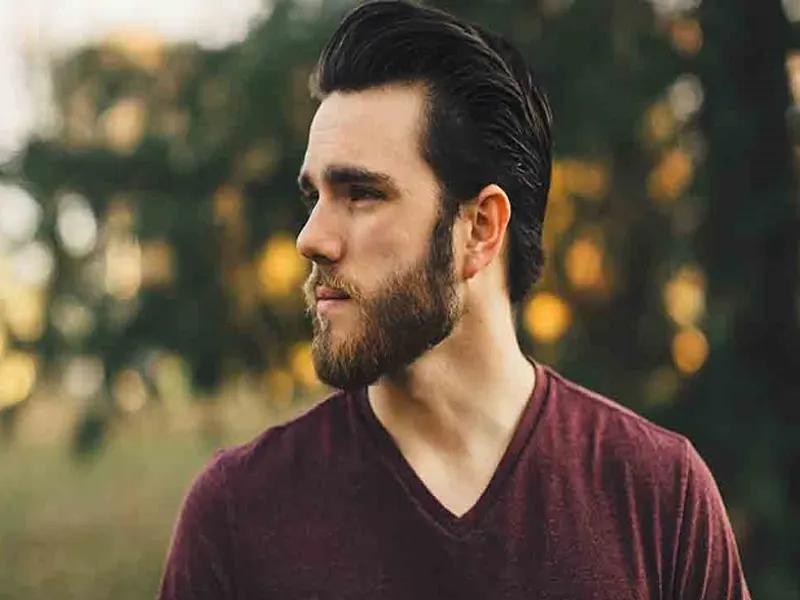
1. Stubble
Description: A short length of hair, akin to a few days’ growth. Best For: Those wanting a rugged, low-maintenance look.
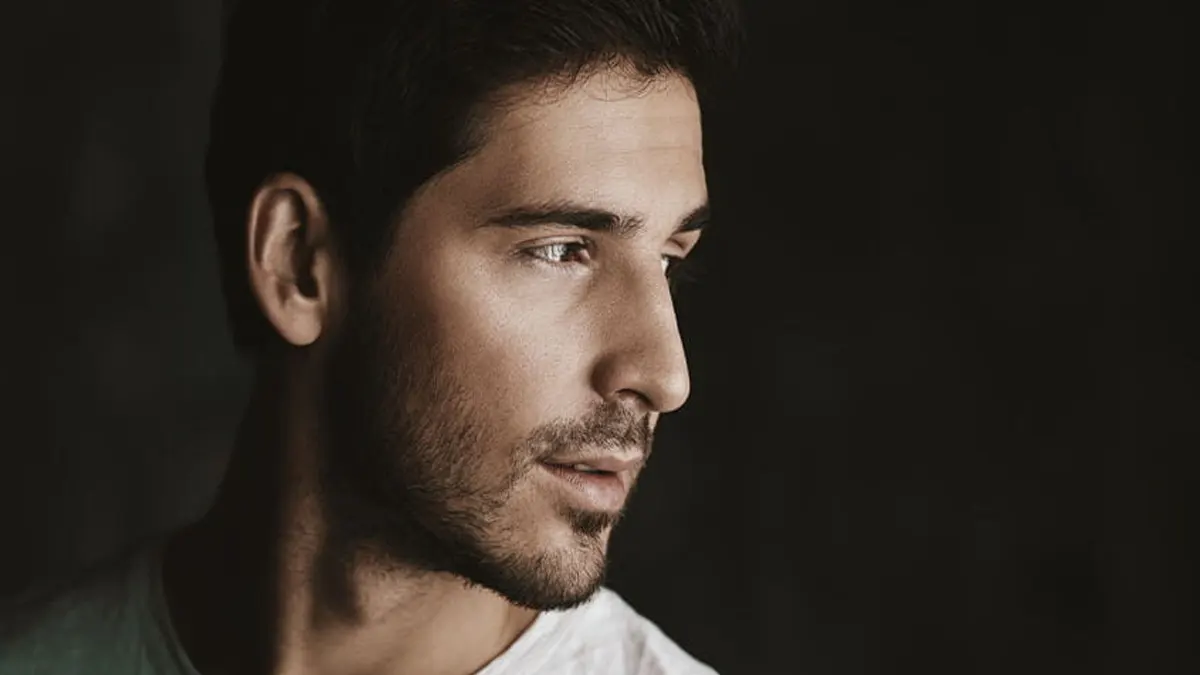
2. Goatee
Description: A small beard that elongates around the mouth and chin area, sometimes connected to a mustache. Best For: Men with square or diamond-shaped faces.
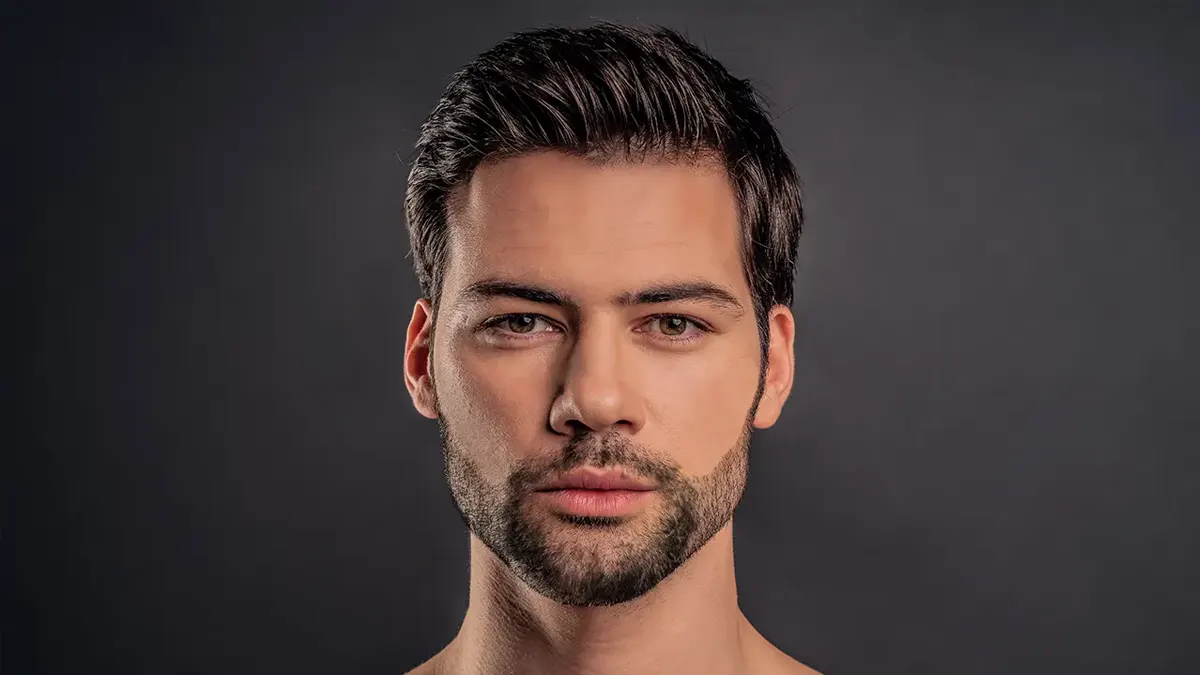
3. Chin Strap
Description: A thin line of hair that follows the jawline and connects chin hair with sideburns. Best For: Those who want to define their jawline without a full beard.
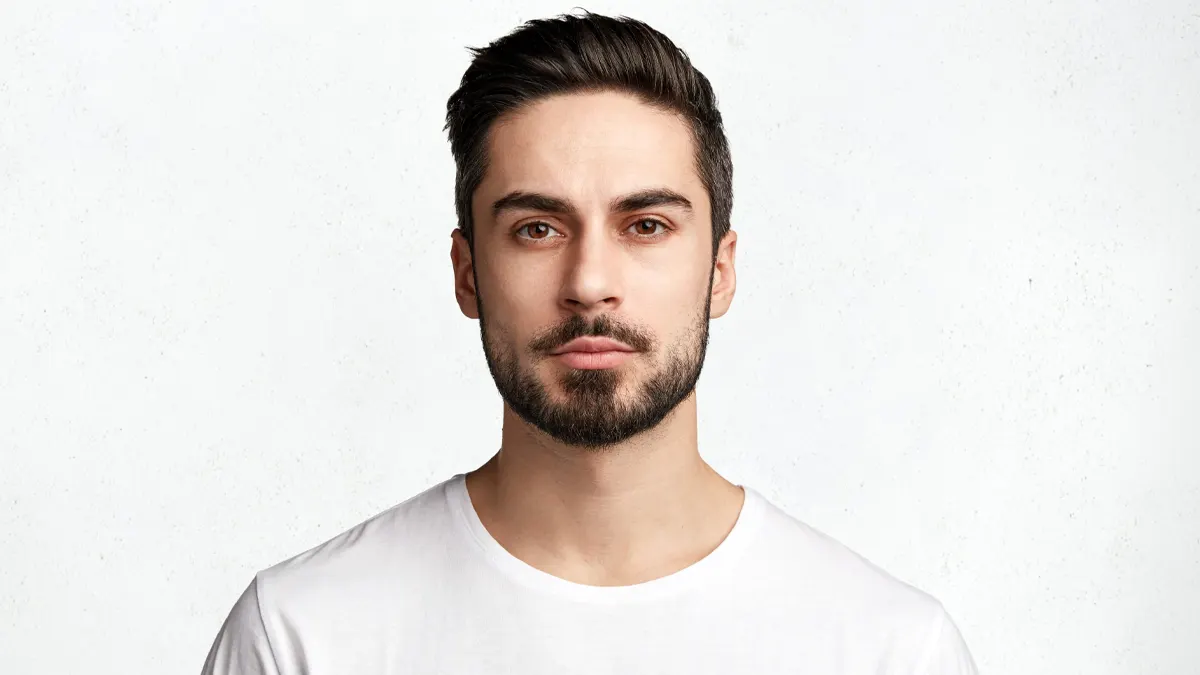
4. Balbo
Description: A combination of a disconnected mustache and hair on the chin, resembling an inverted T. Best For: Men with narrow chins to give an illusion of width.
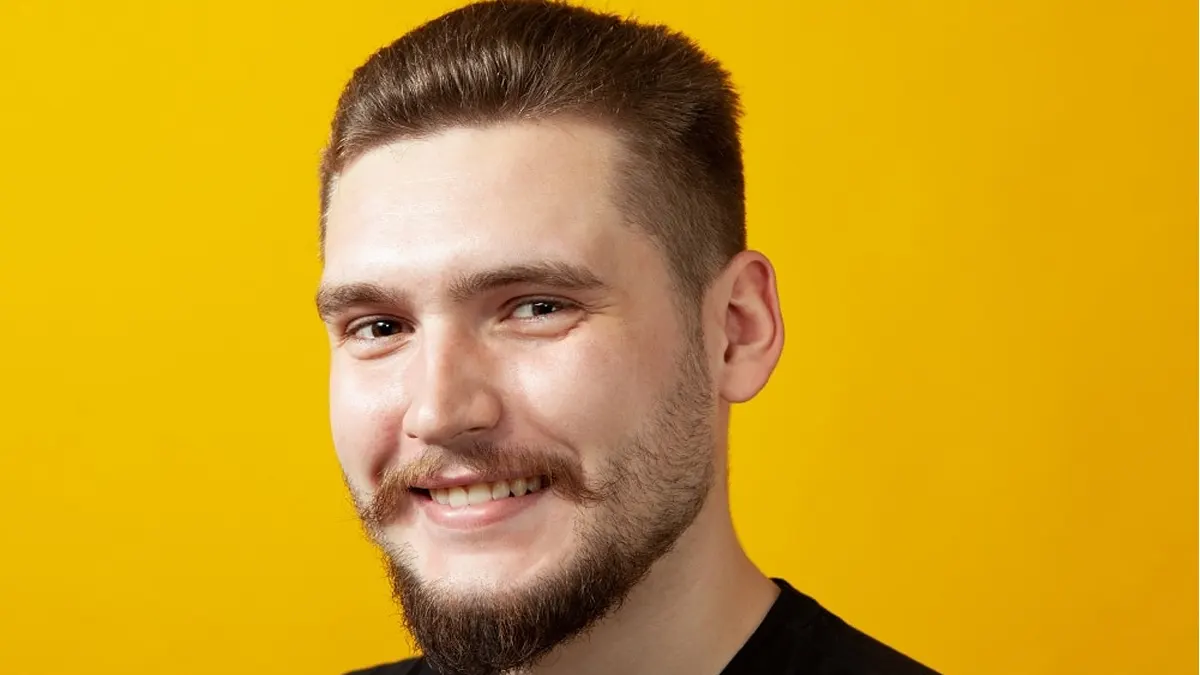
5. Full Beard
Description: A traditional, all-natural style that covers the cheeks, chin, and neck. Best For: Almost every face shape, offering versatility in terms of grooming.
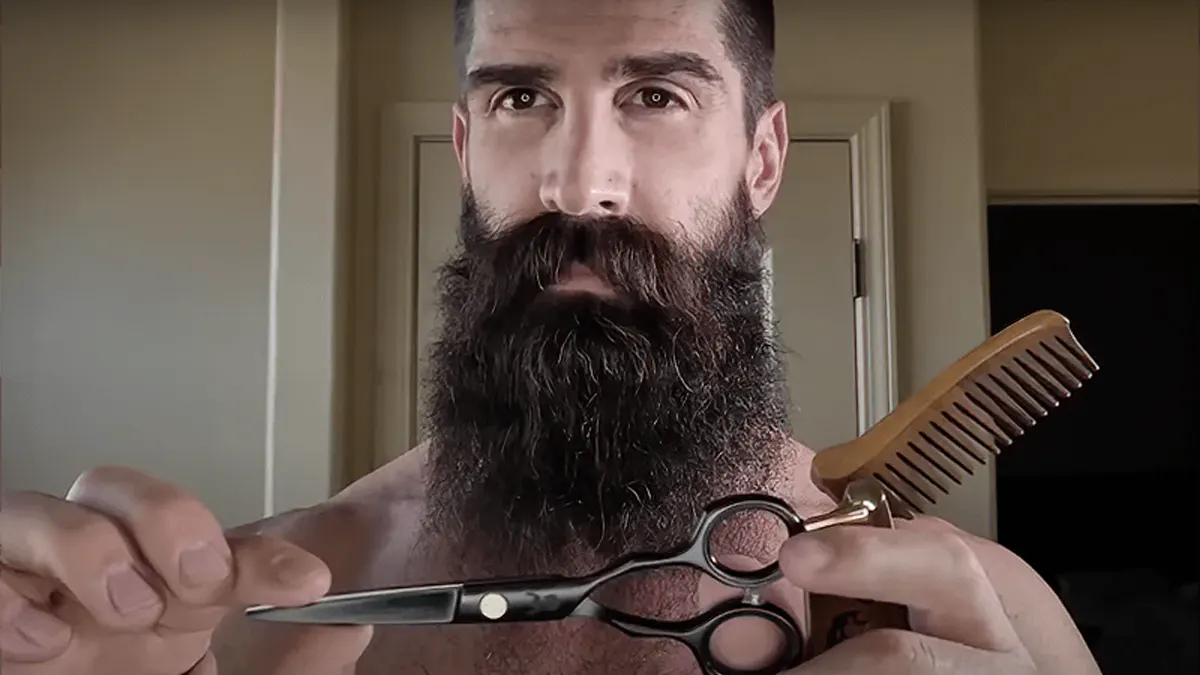
6. Van Dyke
Description: A disconnected mustache and goatee with clean-shaven cheeks. Best For: Men looking for a vintage, artistic look.
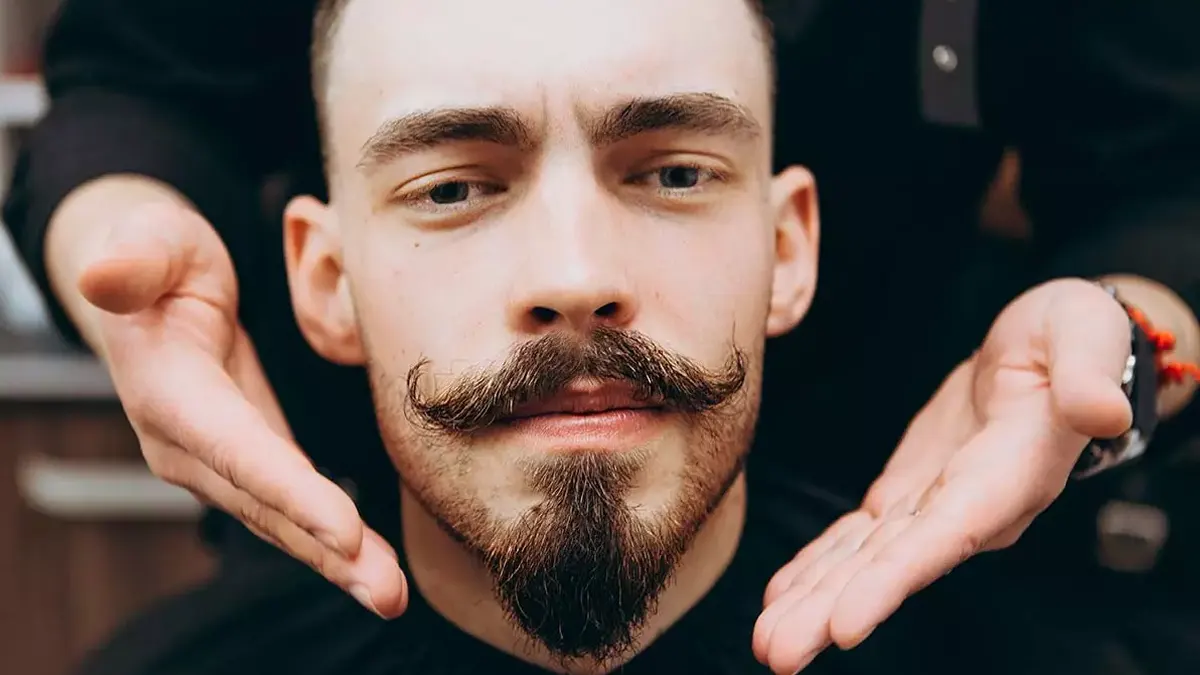
7. Mutton Chops
Description: Sideburns that are extended to the corners of the mouth, often without a chin beard. Best For: Those aiming for a bold, 19th-century look.
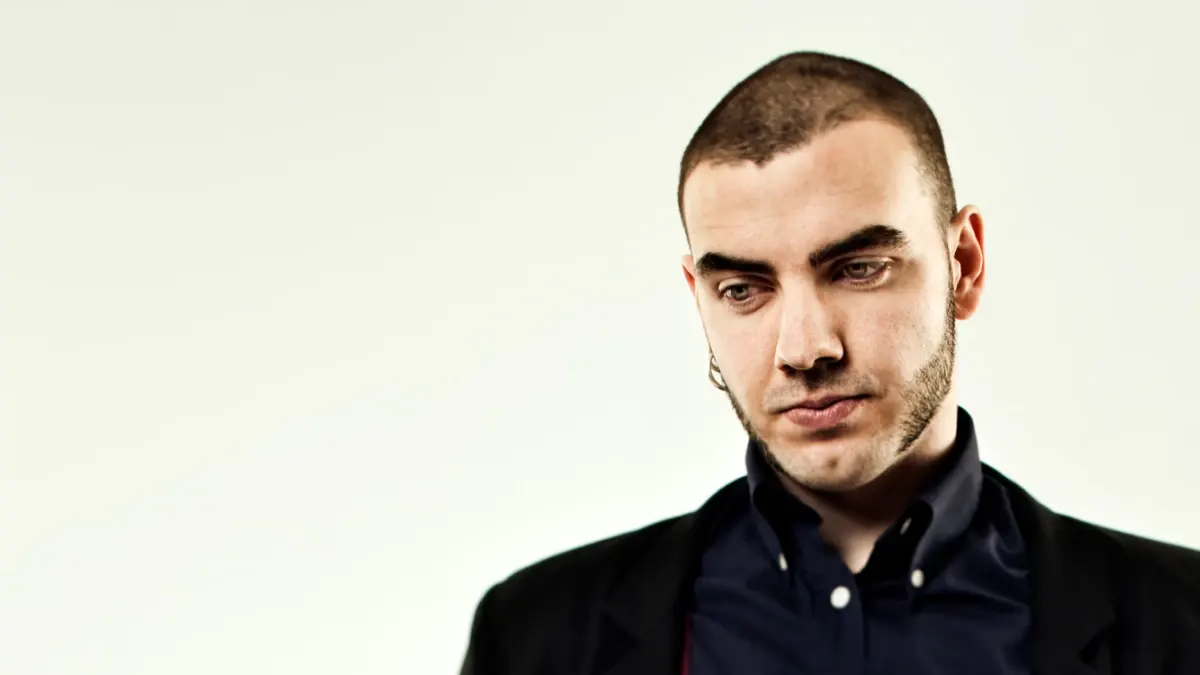
8. Ducktail
Description: A full beard that is shaped so the chin hair is slightly longer, resembling a duck’s tail. Best For: Men who desire a sophisticated yet rugged appearance.
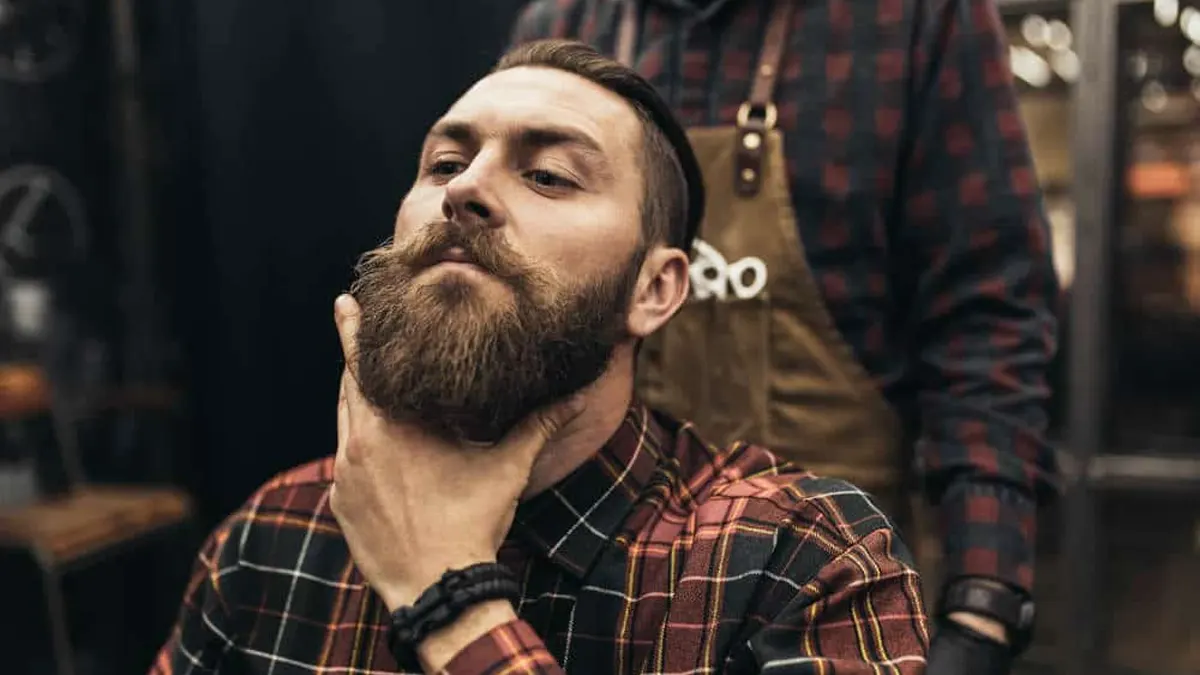
9. Circle Beard
Description: A rounded beard that connects the mustache to the chin beard. Best For: Older men or those aiming for a mature, wise appearance.
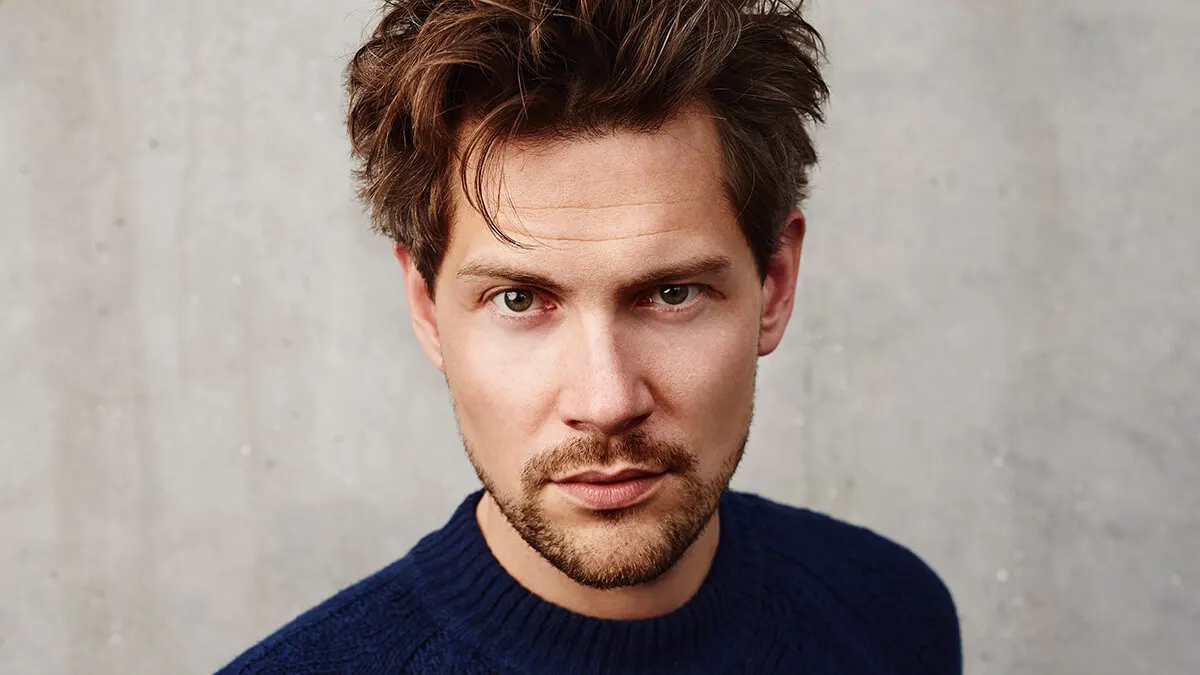
10. Bandholz
Description: A long, full beard combined with a mustache, often free-styled and natural. Best For: Those patient enough for months of growth and aiming for a bold statement.
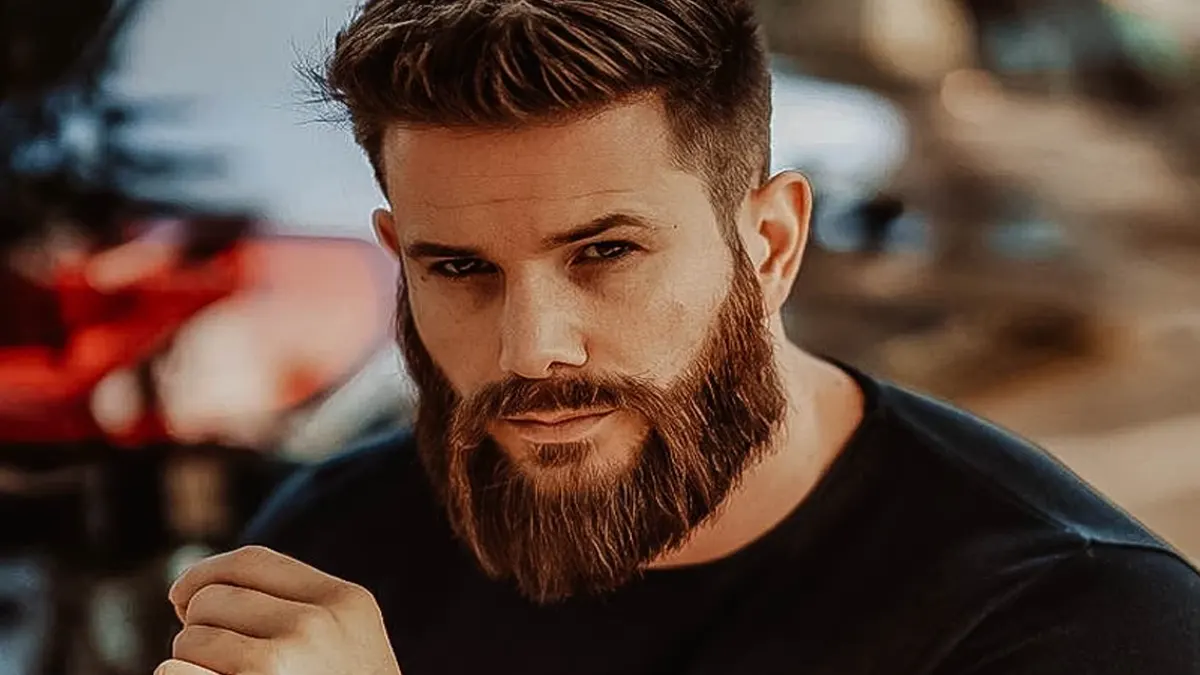
Shape Up Beard Styles:
The beard game has undergone significant transformations over the years, with various styles coming into the limelight. Among the trending styles is the ‘shape up’ or ‘line up’ beard style. Focused on sharp, precise lines, the shape up beard emphasizes clean, geometric edges, showcasing a polished and stylish appearance.
Classic Shape Up
Description: A neat trim that defines the natural lines of your beard, particularly along the cheekbones and jawline.
Best For: Those who desire a minimalistic yet neat appearance.
Styling Tip: Keep the lines straight and symmetric. A good quality precision trimmer is essential for this.
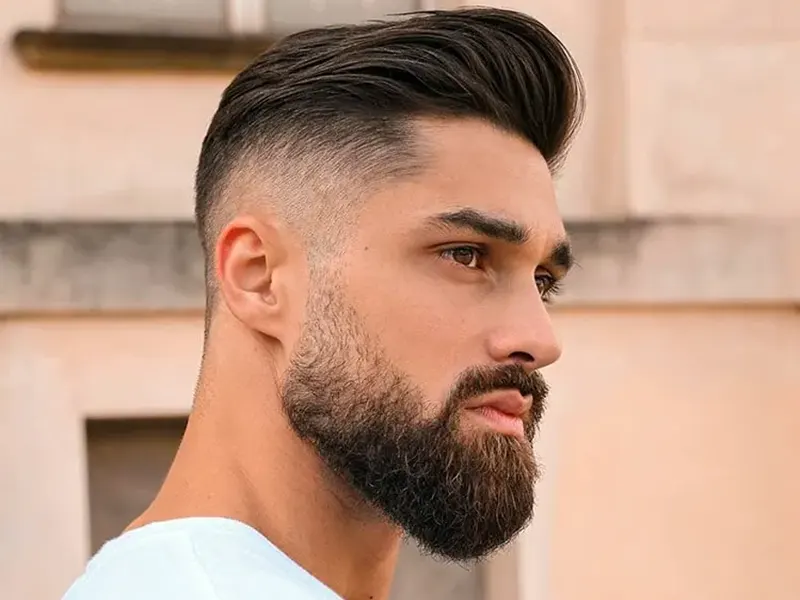
Faded Shape Up
Description: Combines the clean lines of a shape up with a gradient fade on the sideburns.
Best For: Men who want to integrate their haircut with their beard style.
Styling Tip: Start with a close trim at the sideburns, gradually increasing the length as you move down the jawline.

Curve Appeal
Description: Instead of straight lines, the edges are carved into gentle curves, especially along the cheekbones.
Best For: Those with rounded or oval faces to complement their facial contours.
Styling Tip: Gentle curves can be achieved using a safety razor, ensuring symmetry on both sides.
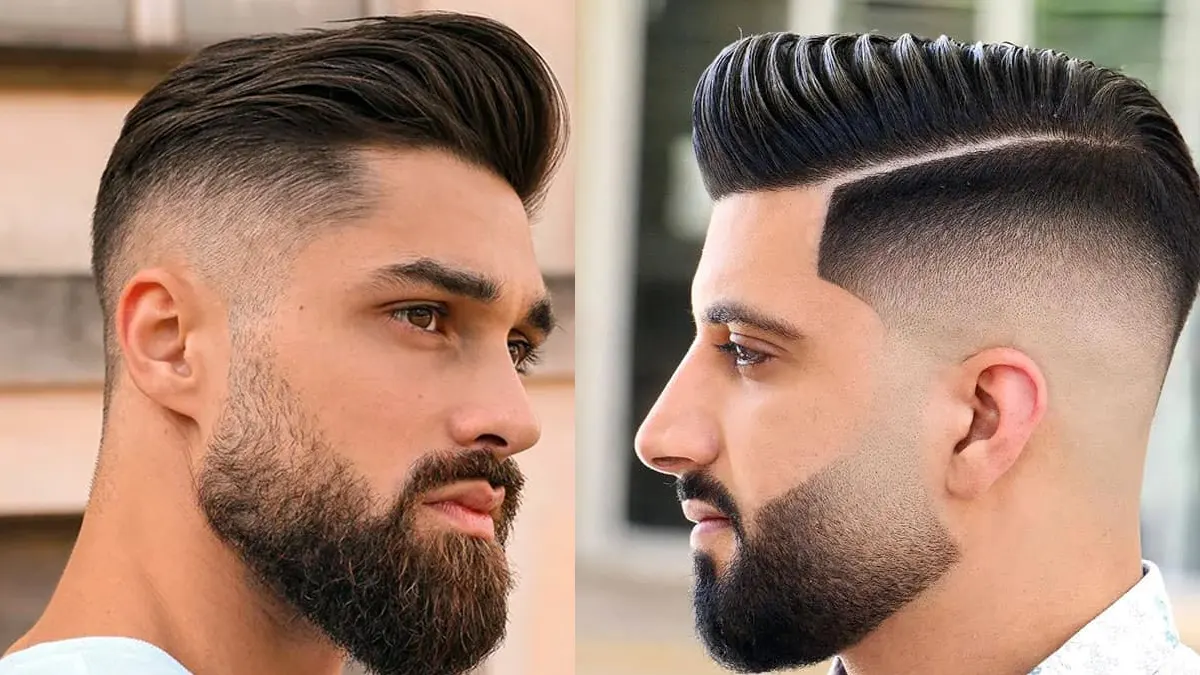
Angular Precision
Description: This style emphasizes angular cuts, creating a more geometric appearance.
Best For: Men with square or rectangular faces.
Styling Tip: Use a straight razor to achieve those sharp angles.
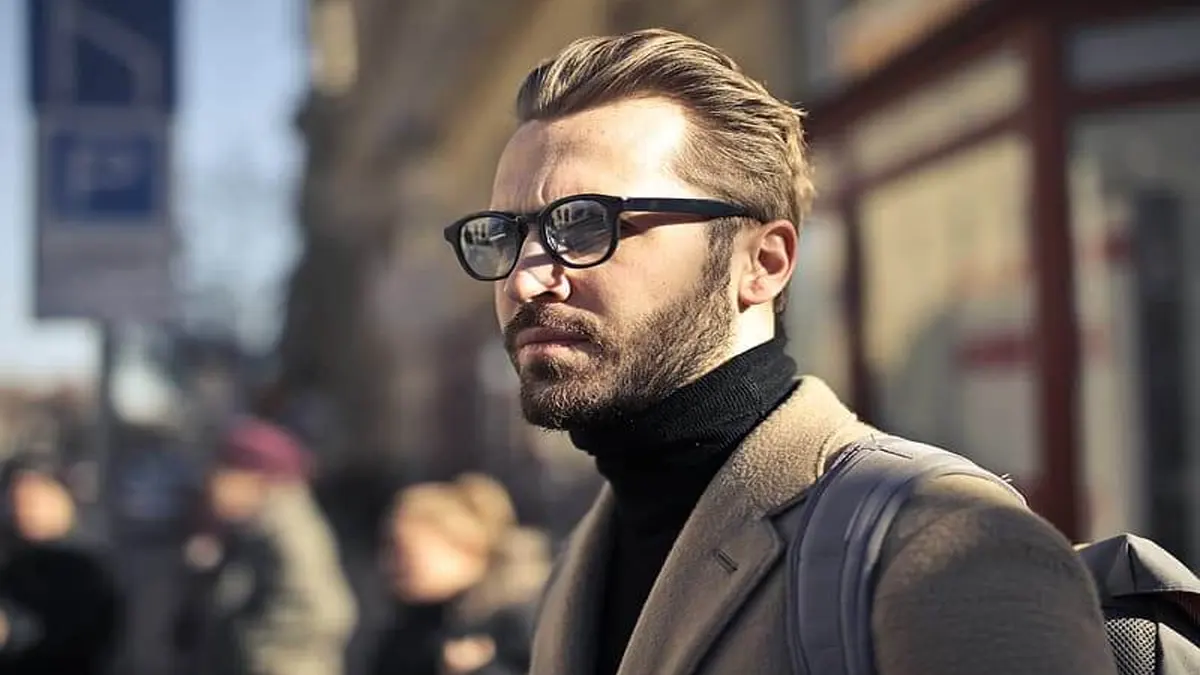
Low Neckline Shape Up
Description: The neckline starts much lower, near the Adam’s apple, with well-defined edges.
Best For: Those who want to add length to the face or emphasize their jawline.
Styling Tip: Keep the cheeks neatly trimmed to draw attention to the defined neckline.
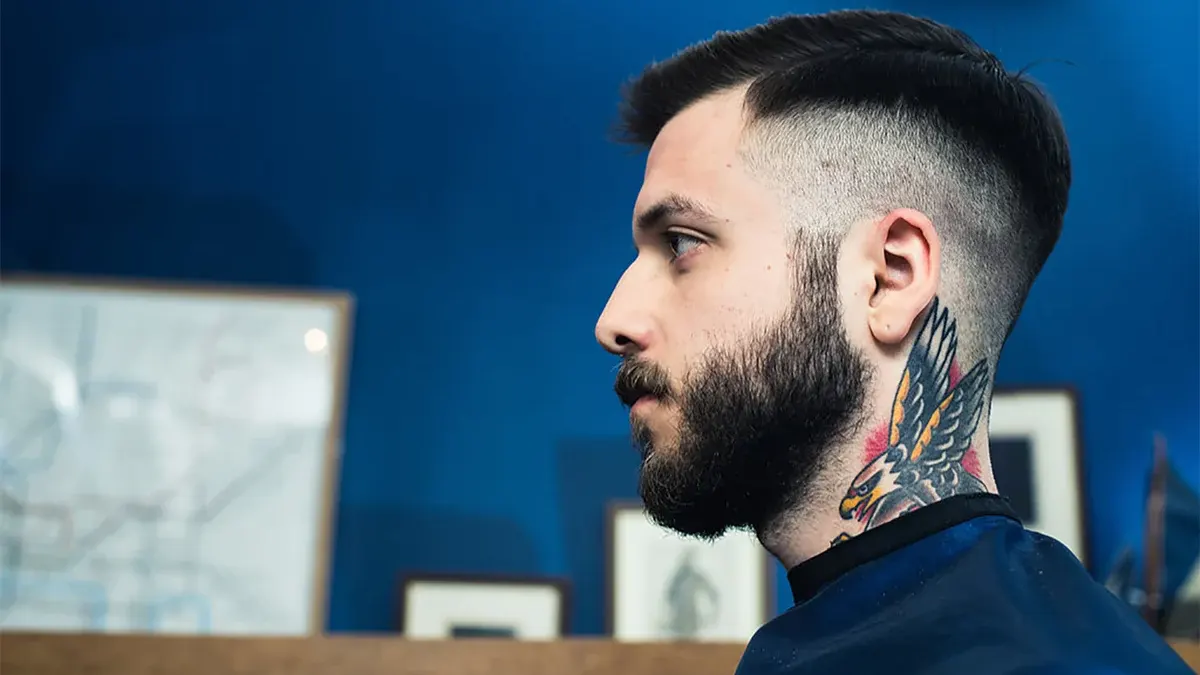
Disconnected Mustache and Beard
Description: A sharp line-up beard with a mustache that doesn’t connect to the beard, emphasizing the separation.
Best For: Men wanting a distinctive look.
Styling Tip: The space between the mustache and beard should be cleanly shaven to emphasize the disconnection.
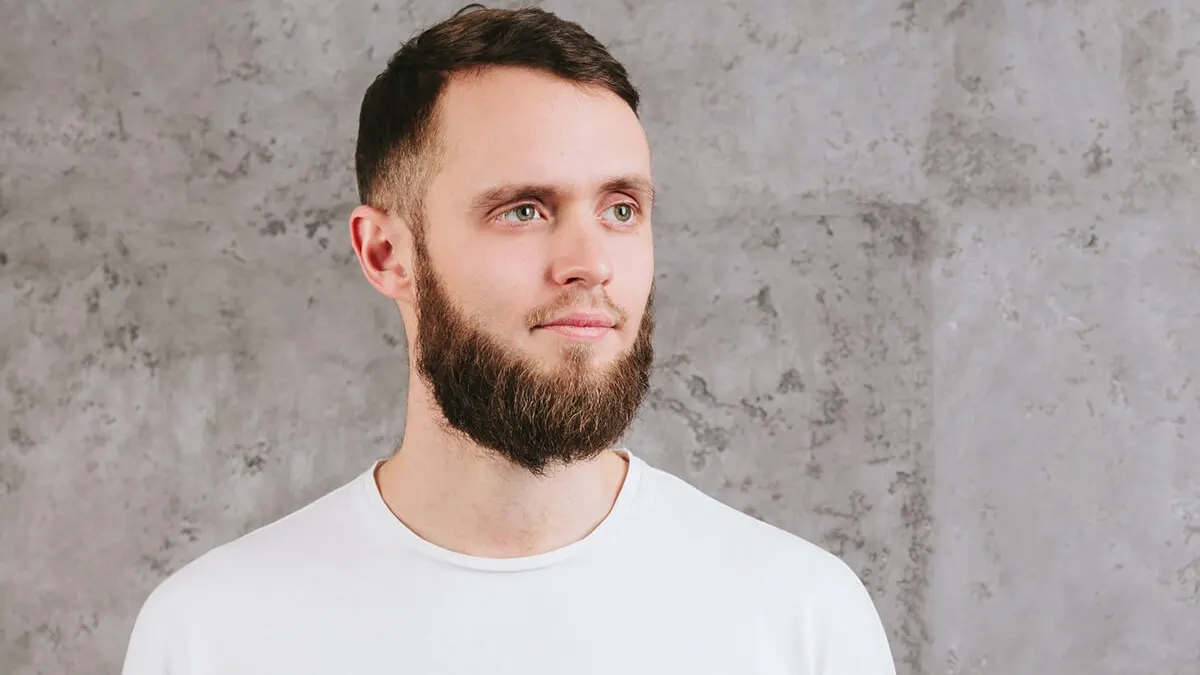
Short Mustache and Beard: The Understated Elegance of Facial Hair
In a world where grand beards and flamboyant mustaches often steal the spotlight, the elegance and subtlety of a short mustache and beard combo offer a refreshing alternative. It’s a style that speaks volumes without shouting, merging the sophistication of controlled grooming with the ruggedness of facial hair. Let’s delve into the short mustache-beard look, its benefits, and how to achieve and maintain it.
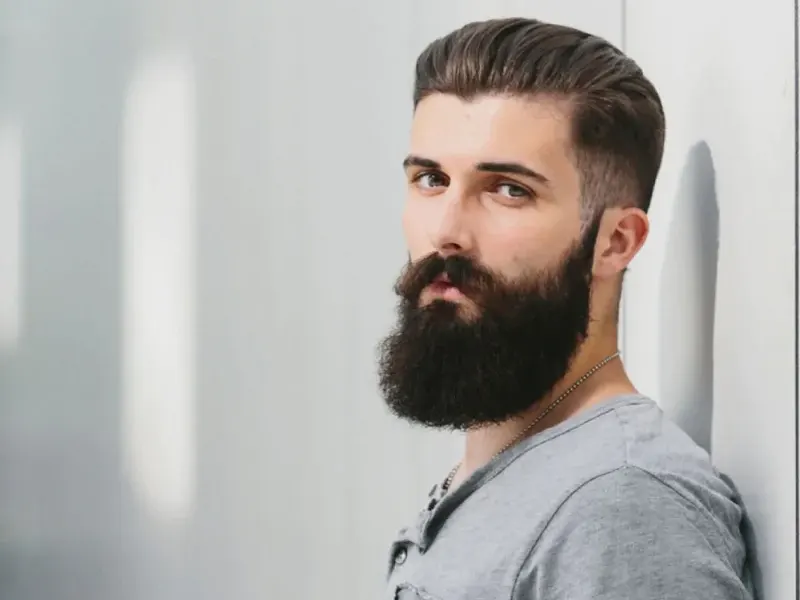
1. Why Opt for a Short Mustache and Beard?
- Versatility: This style is appropriate for both casual settings and professional environments.
- Maintenance: Requires less upkeep than longer facial hair styles.
- Comfort: Ideal for warmer climates or those who prefer less facial coverage.
- Sophisticated Look: Offers a refined and neat appearance.
2. Popular Short Mustache and Beard Styles
- The Corporate Beard: A short, uniformly trimmed beard coupled with a neat mustache. It’s professional and sleek.
- Stubble Beard with Pencil Mustache: A light stubble paired with a finely-trimmed mustache, offering an artistic flair.
- Goatee and Disconnected Mustache: Focuses on the chin and mustache areas, leaving the cheeks clean or lightly stubbled.
- Circle Beard: The mustache and chin beard connect, forming a circular pattern.
3. Achieving the Look
- Trimming: Begin with a beard trimmer on a short setting to achieve uniform length.
- Defining: Use a precision trimmer or razor to define the edges of the beard and mustache, creating clean lines.
- Maintenance: Regularly trim every few days to maintain the short length and crisp edges.
4. Grooming Tips
- Beard Oil: Even with shorter facial hair, using a bit of beard oil can keep the hair soft and skin moisturized.
- Wash and Exfoliate: Cleanse the face and beard regularly to prevent skin issues and keep the beard looking its best.
- Comb or Brush: A beard comb can help in taming stray hairs and ensuring a neat appearance.
5. When to Consider a Change
- Skin Irritation: If you notice skin issues, consider letting the beard grow a bit longer or keeping it even shorter.
- Uneven Growth: If certain areas grow faster than others, regular trims or changing the style might be beneficial.
The Beard Outline: Crafting a Crisp, Defined Look
The difference between a well-groomed beard and one that looks unkempt often comes down to one element: the beard outline. A clean, sharp outline can drastically improve the overall appearance of a beard, making it look more deliberate and maintained. Whether you’re new to the beard game or just looking for tips to refine your look, understanding how to craft the perfect beard outline is essential.
Why Is the Beard Outline Important?
- Professional Appearance: A sharp outline provides a more professional and polished look.
- Face Shape Definition: Proper outlining can complement and enhance your face shape.
- Neatness: It prevents the “neckbeard” appearance and ensures a tidy look.
Tools Needed
- Beard Trimmer: Ideal for trimming the beard to a uniform length and removing bulk.
- Straight Razor or Safety Razor: Perfect for getting a sharp, clean outline.
- Beard Comb: Helps in lining up the beard and checking symmetry.
Steps to Achieving the Perfect Beard Outline
- Start Clean: Begin with a washed and dried beard. It’s easier to see and work on a clean canvas.
- Define the Neckline: Ideally, the neckline should be where the neck meets the underside of the jaw. Too high can look odd, while too low can appear unkempt.
- Cheek Line: This is a personal preference. Some prefer a natural cheek line, while others like a sharp, defined line. Find an angle that complements your face shape.
- Trim Excess Hair: Use the beard trimmer to remove any hairs that fall outside the defined lines.
- Shave for Precision: Using a razor, carefully shave the areas outside your outline for a crisp finish.
- Check for Symmetry: Always step back and ensure both sides of your beard are symmetrical. Adjust as needed.
Maintenance
A sharp beard outline requires regular maintenance. Depending on how fast your hair grows, you might need touch-ups every few days to a week.
Crafting a Unique Facial Statement
Beards have been a symbol of masculinity and maturity for ages. But in the modern age, they have transcended beyond traditional roles and have become a canvas for self-expression. With countless variations available, every man can find a beard pattern that not only suits his facial structure but also matches his personality. Let’s delve into the diverse world of beard patterns and discover which one might be the perfect fit for you.
1. Traditional Beard Patterns
- Full Beard: Covers the entire jaw, chin, and cheek area. When maintained well, it offers a classic, rugged look.
- Goatee: A small beard that focuses on the chin area. It may or may not be accompanied by a mustache.
- Mutton Chops: This style features sideburns that are thicker and extend towards the corners of the mouth but do not meet the mustache or chin beard.
- Chinstrap: A thin line of hair that runs along the jawline, connecting the sideburns.
2. Creative Beard Patterns
- Van Dyke: A disconnected mustache and a goatee, often with a soul patch beneath the lower lip.
- Anchor Beard: Resembling the shape of an anchor, it combines a pointed beard that traces the jawline and a mustache.
- Balbo: A disconnected mustache, soul patch, and a beard that covers the chin area.
- Ducktail: A full beard that tapers down to a point, mimicking the tail of a duck.
3. Regional and Cultural Beard Patterns
- French Fork: A full beard split into two segments or “tines” at the chin, popularized in France.
- Old Dutch: A large, full beard without a mustache, often associated with traditional Amish culture.
- Chin Curtain: A beard running along the jawline from ear to ear, reminiscent of U.S. President Abraham Lincoln.
4. Stylized Patterns
- Designer Stubble: A very short, uniformly trimmed beard that gives a “5 o’clock shadow” look.
- Sparrow: Named after Captain Jack Sparrow, it features a thin mustache combined with a soul patch and braided or twirled chin hair.
- Garibaldi: A full, rounded beard combined with a mustache, where the bottom is kept naturally rounded.
5. Considering Your Face Shape
While exploring beard patterns, it’s essential to consider your face shape. Different patterns can accentuate or balance certain facial features. For instance:
- Round Faces: Opt for beard patterns that elongate the face, like the goatee or the Balbo.
- Square Faces: Soften the strong jawline with fuller beard patterns like the full beard or Garibaldi.
- Oval Faces: This versatile face shape can pull off most beard patterns.
- Rectangular Faces: Patterns like mutton chops or chin curtains can balance the face’s length.
Required Professional Touch
If you’re unsure about crafting the perfect outline yourself, consider visiting a professional barber. They can
Conclusion:
‘Shape up’ beard styles are all about precision, definition, and clean lines. They provide a contemporary and urban look, making them ideal for both casual and professional settings. If you’re considering this style, it’s crucial to have the right tools. Precision trimmers, straight razors, and safety razors are indispensable. It’s also worth noting that due to the emphasis on sharp lines, regular maintenance is required to keep the style looking its best. However, with the right care, the shape-up beard can be a standout style, exuding confidence and modernity.
Angled Beard: A Sharp Approach to Facial Hair Styling
There’s something distinctly modern and chic about geometric shapes in fashion and design. When it comes to facial hair, the angled beard takes center stage as a fashionable choice for those seeking a clean, defined look that plays with linear precision. Let’s delve into what the angled beard is, its advantages, and how to achieve it.
1. What is an Angled Beard?
The angled beard is defined by its sharp, geometric lines. Instead of following the natural curves of the jaw and face, the angled beard creates deliberate lines, typically slanting towards the chin or forming distinct shapes.
2. Benefits of an Angled Beard
- Face Shape Enhancement: The angles can enhance or balance certain facial features, adding length or width where desired.
- Modern Aesthetic: Provides a contemporary and stylish look.
- Precision: Showcases grooming prowess and attention to detail.
3. Achieving the Angled Beard
- Starting Point: Begin with a full beard or at least substantial growth to provide enough length for shaping.
- Tools Required:
- Precision trimmer or clipper with a T-blade for clean lines.
- A straight razor or shavette for ultra-sharp edges.
- A beard comb for alignment checks.
- Crafting the Angle: Decide the angle’s starting point, usually just above the jawline. Angle the line to descend toward the chin. The angle’s steepness is a personal preference.
- Cheek Line: Decide if you want the cheeks to complement the angle (with a similar angled line) or if they should remain natural.
- Trim and Shave: Use the trimmer to remove hairs outside the desired lines. For sharper edges, follow up with a straight razor.
- Maintenance: Keep the edges neat with regular touch-ups every few days.
4. Pairing with a Mustache
The angled beard can be paired with various mustache styles:
- Disconnected: A mustache that doesn’t connect to the beard, adding more geometric separation.
- Angular Mustache: Echo the beard’s angles with sharp lines in the mustache, further emphasizing the geometric theme.
- Natural Mustache: Provides a soft contrast to the sharpness of the angled beard.
5. Tips for Perfection
- Stay Symmetrical: Continually check both sides to ensure they’re even.
- Moisturize: Sharp angles can make the skin more visible, so keep it hydrated and healthy-looking.
- Professional Help: If unsure about achieving the perfect angle, consider a visit to a skilled barber for the initial shaping.
Conclusion
The angled beard offers a striking, contemporary look that stands out in the world of facial hair styles. While it requires precision and maintenance, the end result is a stylish and modern beard that can be a real conversation starter. Whether you’re looking to reshape your current beard or trying a new look altogether, the angled beard is a sharp choice for the modern man.
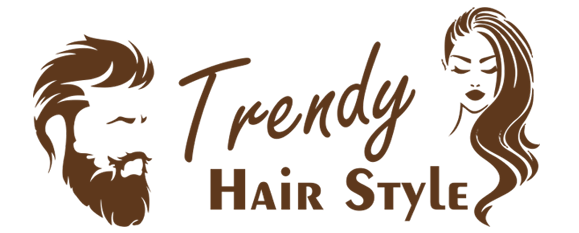
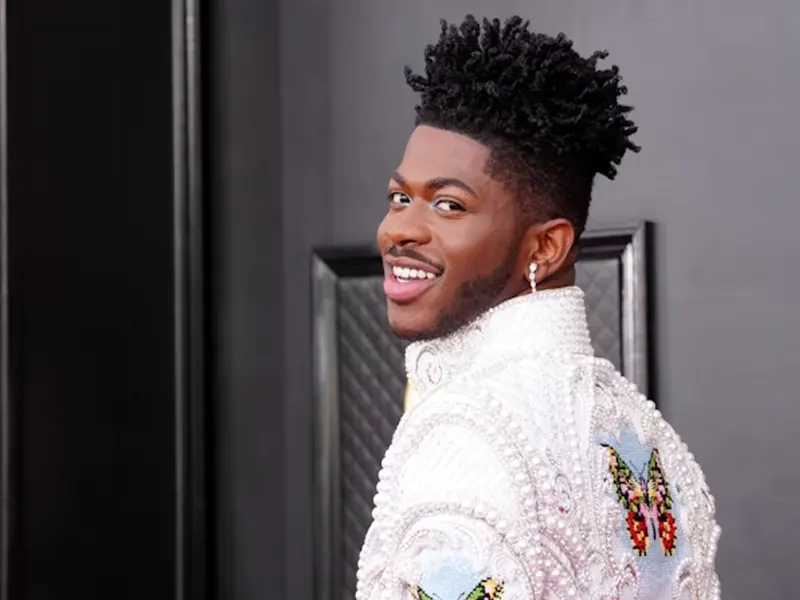 Jay Z’s Hair: More than Just a Style Statement
Jay Z’s Hair: More than Just a Style Statement 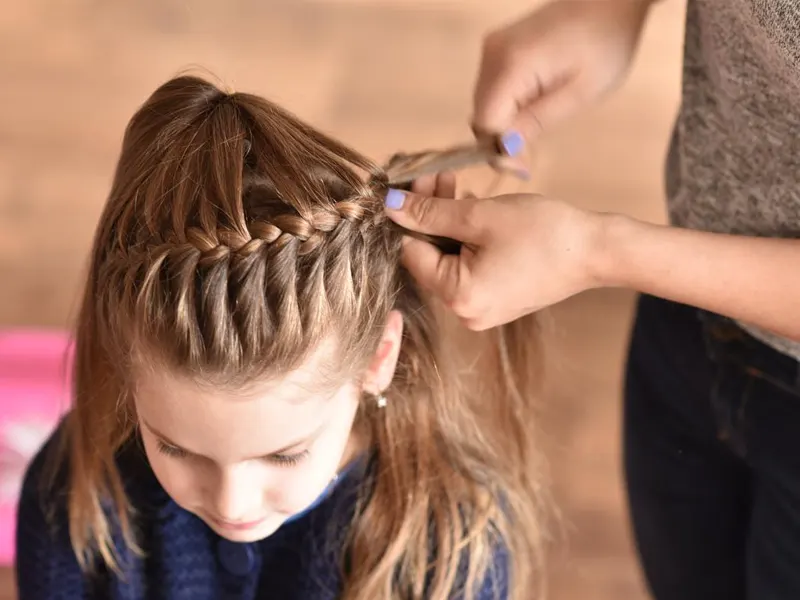 Braid Hairstyles for Kids: Cute, Comfortable, and Creative
Braid Hairstyles for Kids: Cute, Comfortable, and Creative 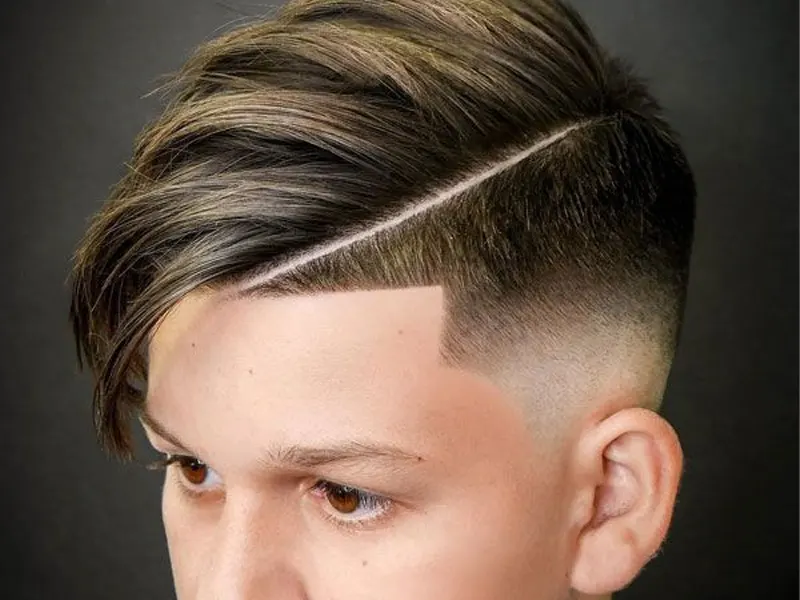 “The Nuanced World of Tapers and Fades: An In-Depth Examination”
“The Nuanced World of Tapers and Fades: An In-Depth Examination” 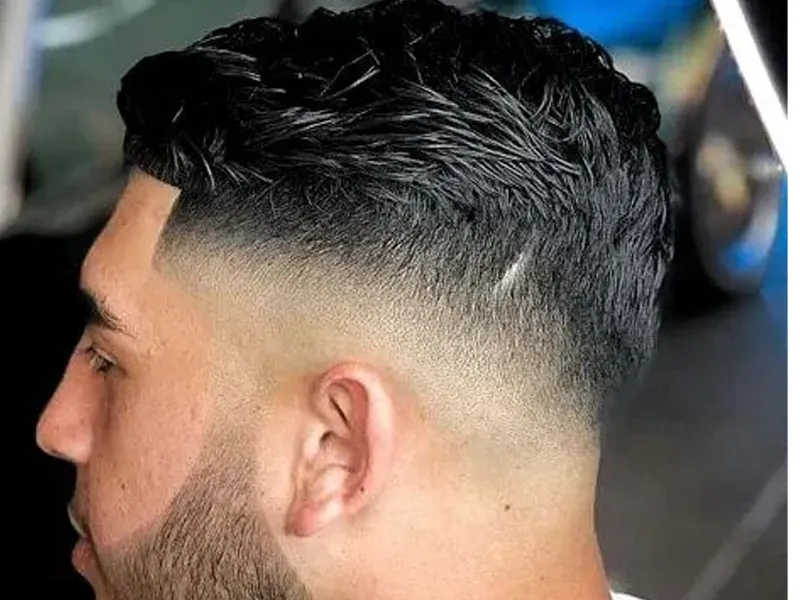 “The Drop Fade Chronicles: Modernity Meets Mastery”
“The Drop Fade Chronicles: Modernity Meets Mastery” 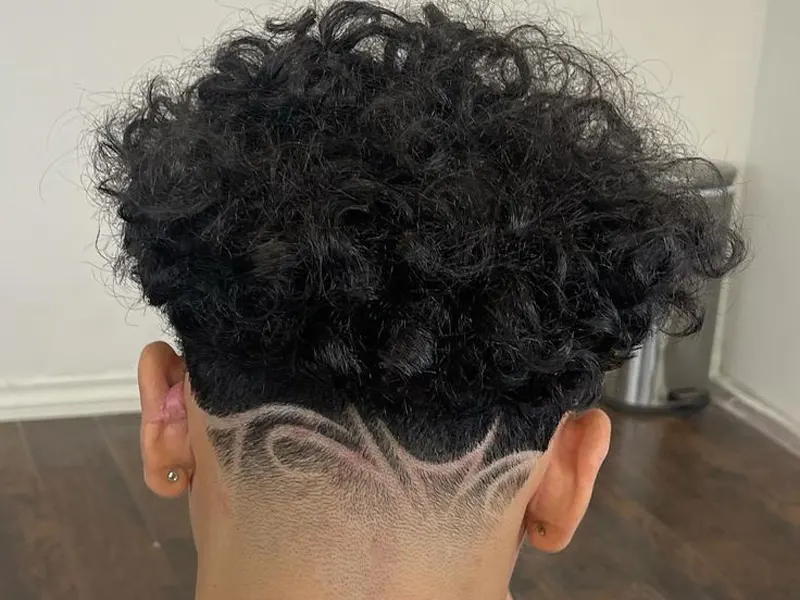 “Elevating Elegance: A Deep Dive into the Nuances of the Low Taper and Beyond”
“Elevating Elegance: A Deep Dive into the Nuances of the Low Taper and Beyond” 
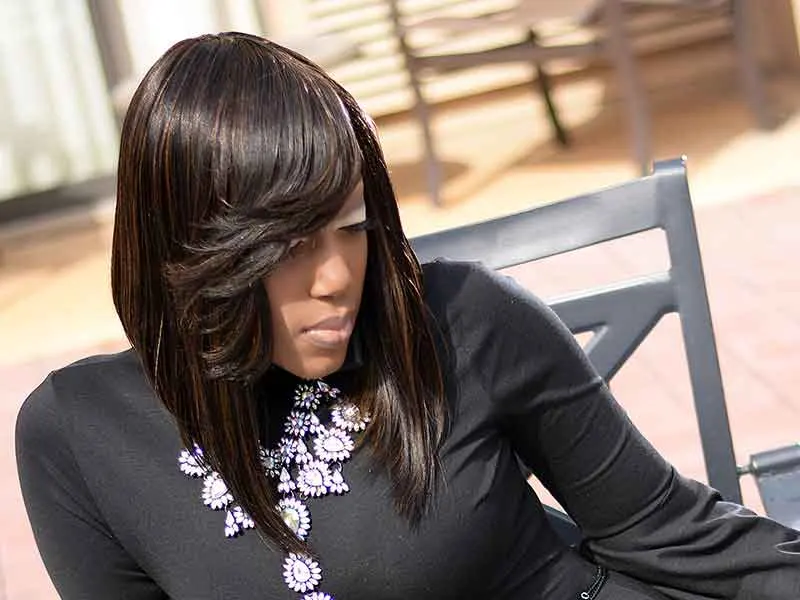 Quick Weave: Revolutionizing Hair Extensions and Styling
Quick Weave: Revolutionizing Hair Extensions and Styling 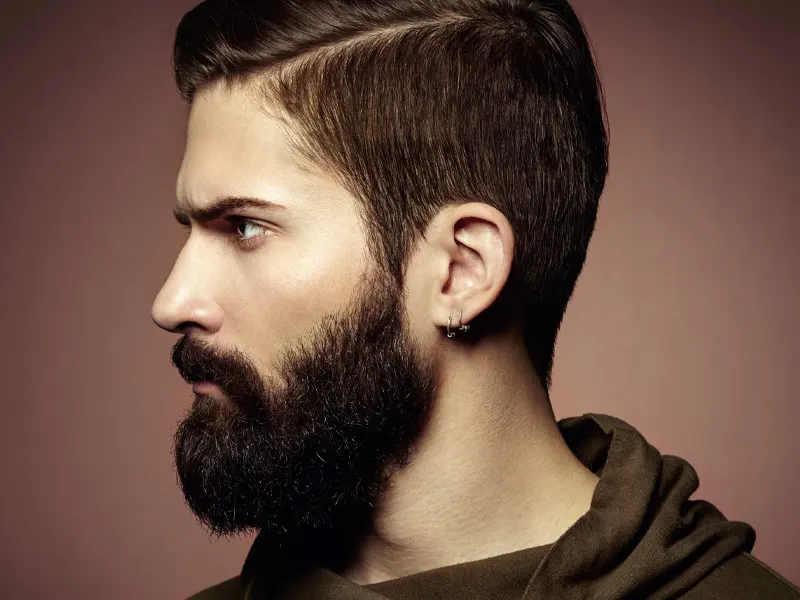 The Neck Beard: Understanding and Styling the Controversial Facial Hair
The Neck Beard: Understanding and Styling the Controversial Facial Hair 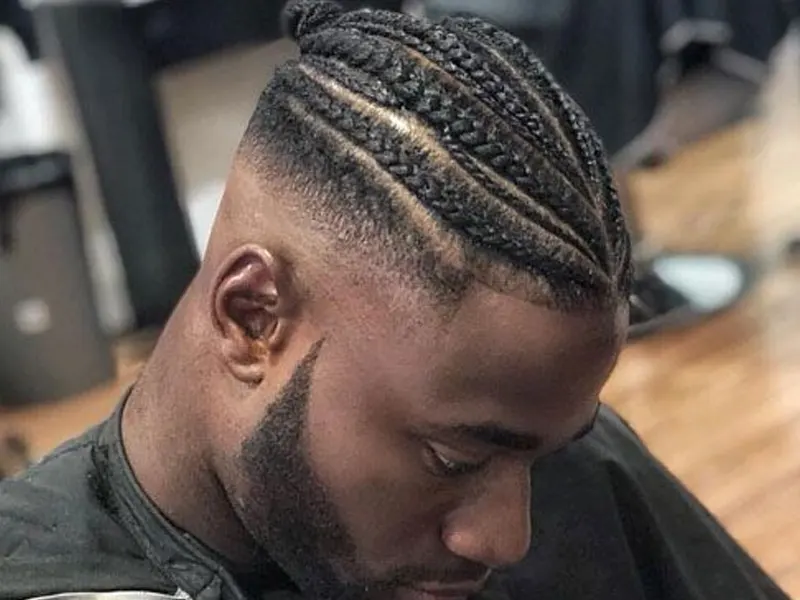 Black Man Braids with Fade: The Perfect Fusion of Heritage and Style
Black Man Braids with Fade: The Perfect Fusion of Heritage and Style 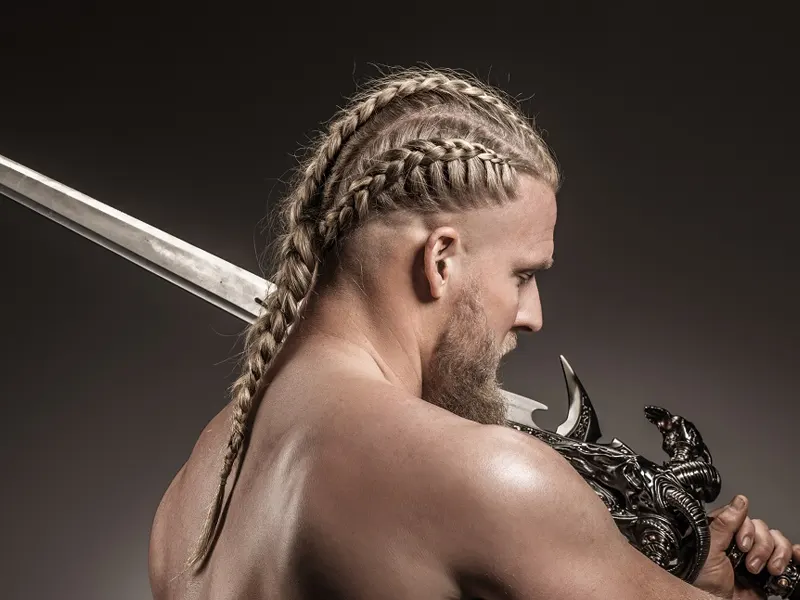 Viking Braids: From Valhalla to Vogue
Viking Braids: From Valhalla to Vogue 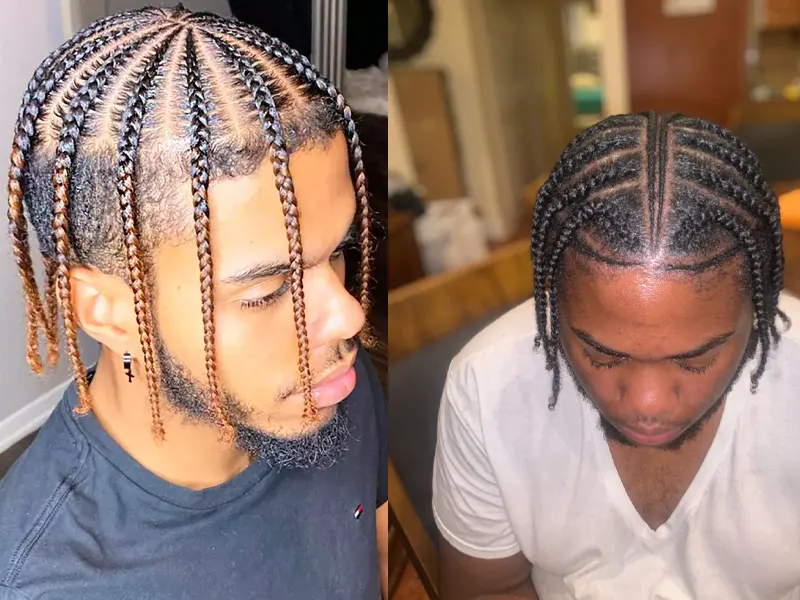 Pop Smoke Braids: An Emblem of Artistry and Legacy
Pop Smoke Braids: An Emblem of Artistry and Legacy
1 Comment